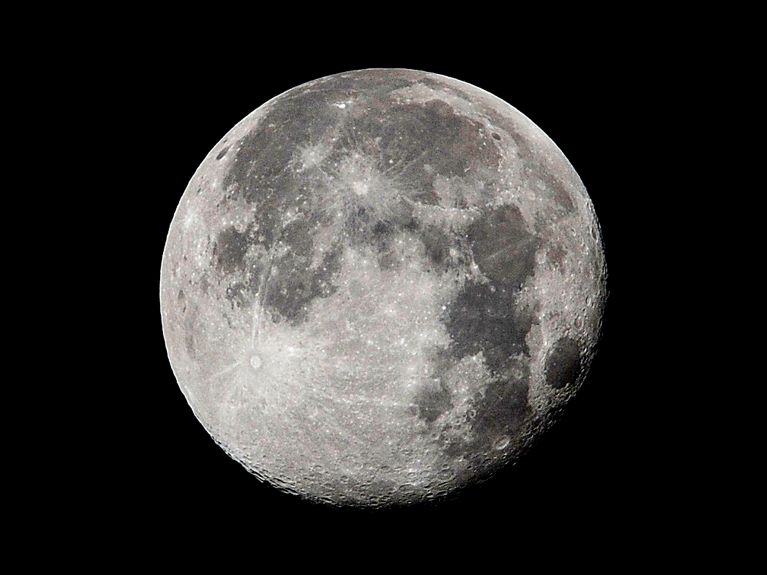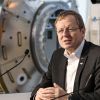Moon Mission
Israeli and German companies are intending to go to the moon together – and are building a landing system for commercial use.

It is a long time since anyone has been there. In 1969, three American astronauts set foot on the moon for the first time. A number of their colleagues were to follow them, but there have been no manned moon landings since 1972. Even today, only three nations – the United States, what was then the Soviet Union and China – have ever succeeded in landing spacecraft on the moon. Now however, interest appears to be reawakening. The United States recently announced that it was intending to fly human beings back to the moon in 2024 at the latest. And only a few months ago, the innovative nation Israel launched an attempt that attracted global attention – in May 2019, its unmanned spacecraft “Beresheet” was about to land when, out of control, it crashed on the moon’s surface.
Israel as an extremely interesting partner
Something else that was new and unique about the project is that there was no state space agency behind it. Instead, there was a billionaire, one who had the lander developed by an organization by the name of SpaceIL in collaboration with the Israel Aerospace Industries (IAI). The knowledge gained has made Israel an interesting partner for the German space industry and in early 2019 OHB System, a technology company specializing in satellites based in Bremen and Oberpfaffenhofen, concluded a cooperation agreement with IAI. At the signing of the contract, the managing director of IAI, Nimrod Sheffer, announced that his company was “proud to be collaborating with one of the world’s leading satellite manufacturers, as well as with the European Space Agency and with the German Aerospace Centre. This is a particular honour for the Israeli aerospace industry.” He added that collaborating with OHB System had made it possible to be present at the forefront of “the exploration of outer space”.
Pooling know-how, solving problems
The agreement has also with approval in Germany – and not only because for years now collaboration with Israel has been close and based on trust. “We can now effectively combine our know-how,” explains Timo Stuffler who is responsible for business development at OHB System. And although it is true that the Beresheet mission was not completely successful the Israeli aerospace experts were still able to solve a large number of technical problems. In 95% of cases the hardware and software worked as expected – an excellent starting point for further joint plans is the opinion in Oberpfaffenhofen.

However, even though specialist knowledge and development budgets can now be pooled, the mission is still not easy. When landing on the moon major fluctuations in speed need to be dealt with, as Stuffler explains. On one hand, the space vehicle needs to gather the necessary speed but, on the other, it also had to be able to decelerate again. And the heavier the spacecraft, the more energy is needed for the purpose. This in turn makes transporting additional measuring instruments, robots or self-propelling lunar jeeps difficult. In the case of the Israeli prototype – a small lander weighing a total of just under 600 kg – most of which was fuel – it was, in the end, only possible to add few kilograms of extra weight.
The two nations now plan to expand the capacity of the payload together. The two cooperation partners have set themselves the goal of 150 kg. The experience gained from the Beresheet mission gives the company what Opher Doron of IAI calls “a considerable competitive edge in terms of timeframe and risk involved” vis-à-vis rival firms. Whether what they end up with is a little lander, subsystems for a larger lander or even a moving vehicle – Stuffler is not yet prepared to commit himself, saying that all manner of options are being considered. And he adds that the cooperation agreement is not restricted to a particular timeframe or a single piece of equipment. “After all, we don’t intend to just land on the moon, we intend to make it possible to conduct experiments there too.”
Heralding in a new era in space travel together
Parallel bauen auch die USA an Mond-Transportmaschinen. Das zurzeit in der Planung befindliche größte US-Landesystem soll bald mehrmals im Jahr bis zu fünf Tonnen Lasten auf die Mondoberfläche bringen. „Dadurch wird auf dem Mond eine gewisse Infrastruktur entstehen“, sagt Stuffler. Und somit auch ein kommerzieller Markt für Hin- und Rückflüge. Dass es in den kommenden Jahren ausreichend europäische Kunden geben wird, die Messgeräte oder andere Materialien zum Mond schicken wollen, darauf vertrauen Deutsche wie Israelis. Neben der Europäischen Weltraumorganisation ESA haben auch wissenschaftliche Einrichtungen und Unternehmen großes Interesse an einer zuverlässigen Mondlandefähre.
At the same time the United States is also engaged in building spacecraft for transportation to the moon. Currently at the planning stage, the largest US landing system is projected to soon start transporting loads of up to 5 tons to the surface of the moon several times per year. “This will result in a certain infrastructure on the moon,” explains Stuffler. And thus, a commercial market for outward and return flights to and from the moon, as well. Both the Germans and the Israelis are confident that in the coming years there will be enough European customers who will want to send measuring equipment or other materials to the moon. Alongside ESA, the European Space Agency, scientific organization and other companies are also extremely interested in a reliable moon landing ferry.
There is in fact still a great deal to be investigated on the moon; large expanses of its surface can still be considered terra incognita. But the principal focus is currently on extracting resources. By way of example, we have long since known that there are layers of ice in the moon’s craters that are several meters thick. Until now, it has not been possible to use these resources. If in future we succeed “in extracting the hydrogen and oxygen there,” explains Stuffler “this would lay the foundations for exploiting the energy and fuels there.” This could represent the start of a new era in the history of aerospace: And wherever energy sources are accessed, , settlement on the moon becomes increasingly probable.
You would like to receive regular information about Germany? Subscribe here:


